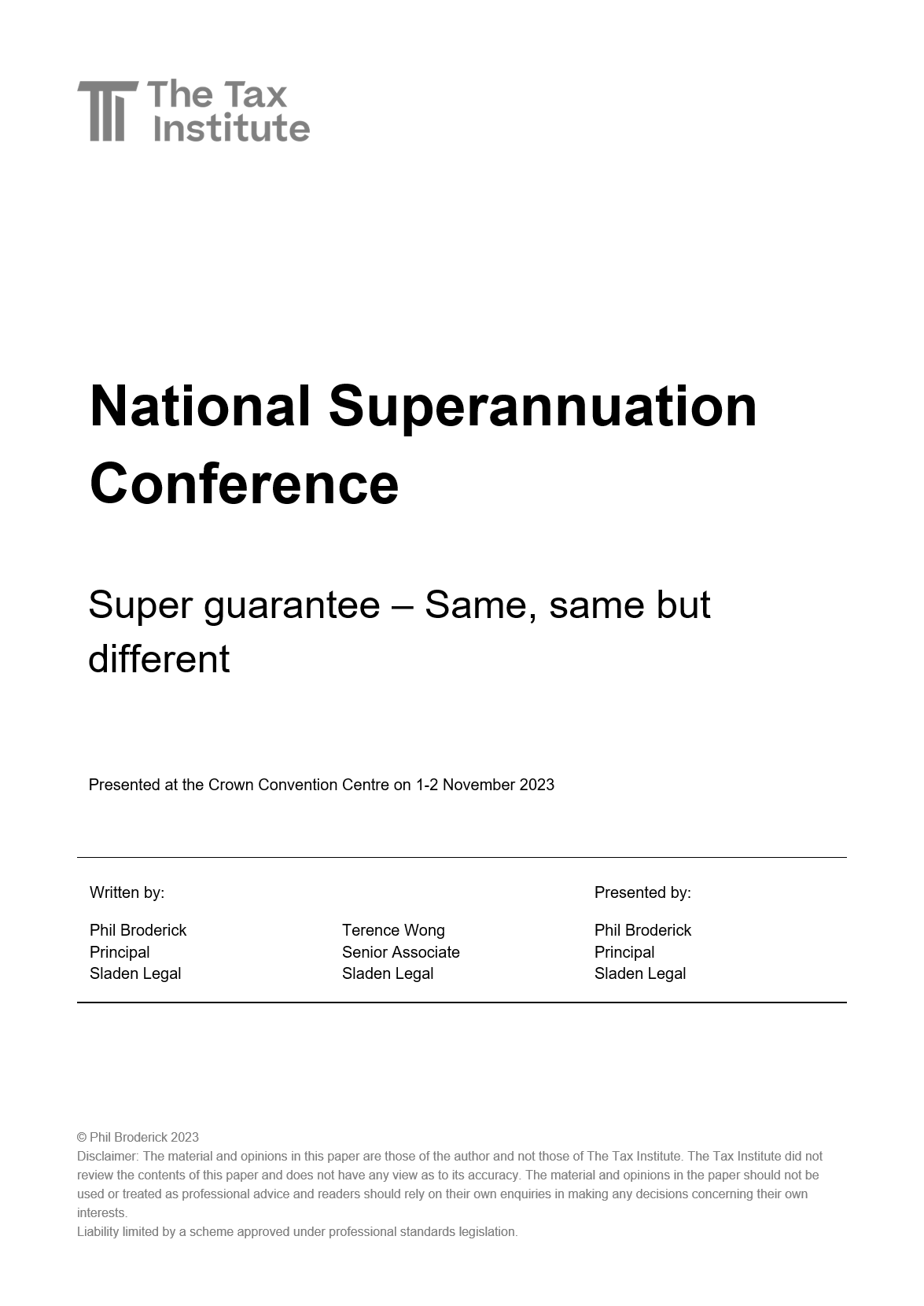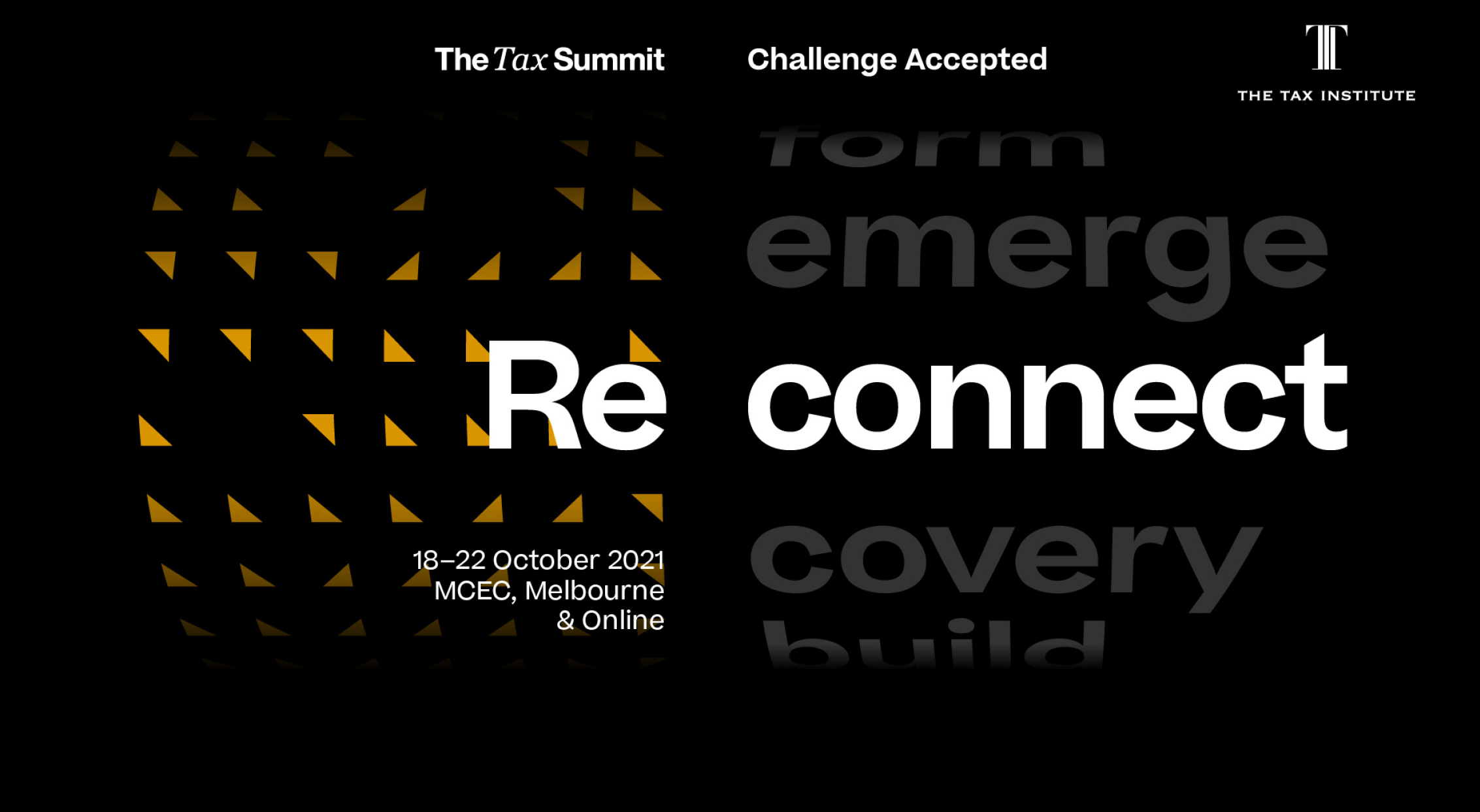Session 4B: Resolving and avoiding internal disputes in SMSFs
Rollovers - practical strategy and compliance insights
In the current economic landscape, business owners may be considering a restructure, merger, or demerger to adapt, survive, or enable growth. A change in the structure of a business typically involves either the transfer of ownership interests in the entire business or of specific assets of the business. The disposal of an ownership interest in a business or its assets may trigger tax consequences for the business or business owners on capital or revenue account.
Session 4: Trusts and small business CGT concessions – Oil and water or peas and carrots?
The small business capital gains tax (CGT) concessions (Concessions) in Division 152 of the Income Tax Assessment Act 1997 (ITAA 97) offer significant opportunities to reduce or eliminate tax levied on capital gains.1 However, despite a recent judicial pronouncement that the Concessions should be interpreted beneficially,2 the legislative conditions for relief are intricate and complex.
Protecting Against Death Benefits Challenges
Super guarantee – Same, same but different
This paper has been built on a previous paper on the superannuation guarantee (SG) regime, titled Super Guarantee – no longer the toothless tiger. That paper was designed to take a holistic examination of the SG regime. In this paper, we have built on that approach and added a number of developments, including:
Session 3: Accessing The Small Business CGT Concessions In A Trust
Super Guarantee – Same, Same But Different
This paper has been built on a previous paper on the superannuation guarantee (SG) regime, titled Super Guarantee – no longer the toothless tiger. That paper was designed to take a holistic examination of the SG regime. In this paper, we have built on that approach and added a number of developments, including:
Divorce, death and super – how to exit an SMSF
Main Residence Exemption: Is It The Devil Or An Angel In The Details?
The capital gains tax (CGT) main residence exemption (CGT MRE) is (arguably) the most generous exemption for post-CGT assets in the income tax legislation. The eligibility requirements are not onerous, and it is available to young and old rich and poor. However, actions, or inactions, can result in loss of the CGT MRE in whole or part.
"Toto, I've got a feeling we're not in Kansas anymore" - the changing landscape of year-end tax considerations
Landholder Duty Aggregation
CGT Liability Of Foreign Beneficiaries
Residency – Part 2: Individuals
Multiple Party Investment Structures – Part 2: Superannuation (SMSF) Issues
The Top Three Key Cross-Border Tax Issues in the Estate Plan
Latest Legislative Developments In Property
How to approach business structures and restructures in 2021
Defining the beneficiaries of a discretionary trust
SMSFRB 2020/1– where are we now with SMSFs and property development?
SMSFs (self managed superannuation funds) have been carrying on property development activities ever since SMSFs came into existence. Yet despite that there is still a common concern that such activities will cause the SMSF to become non-compliant, or subject to penalties, on the basis that such activities, and in particular undertaking a property development business, are prohibited.





















